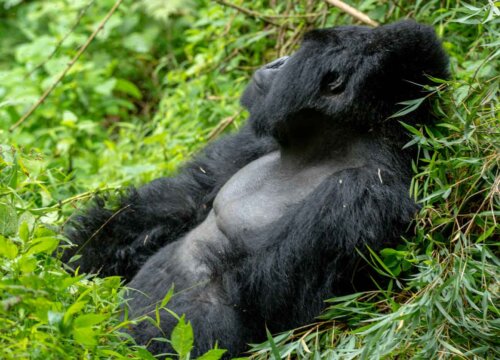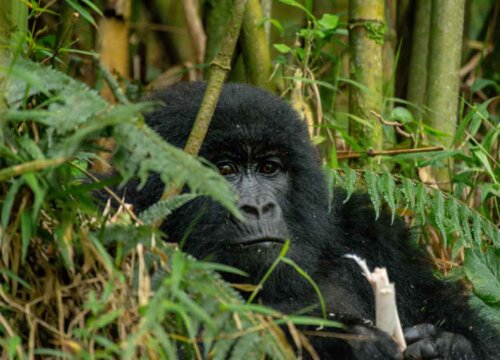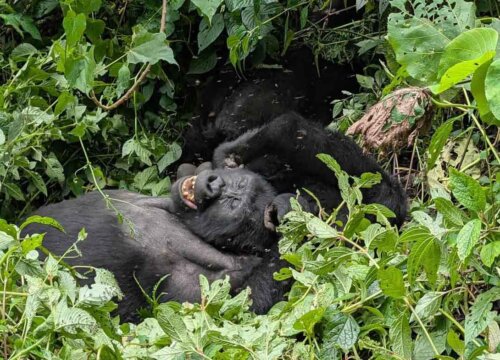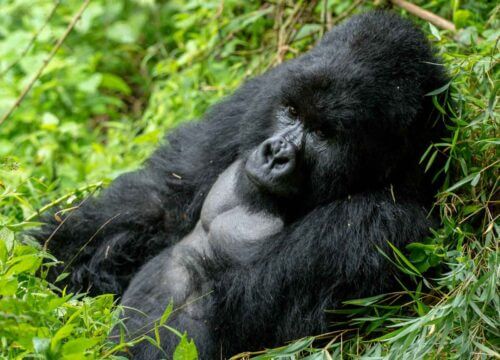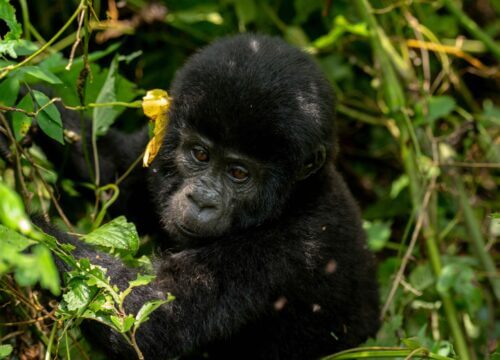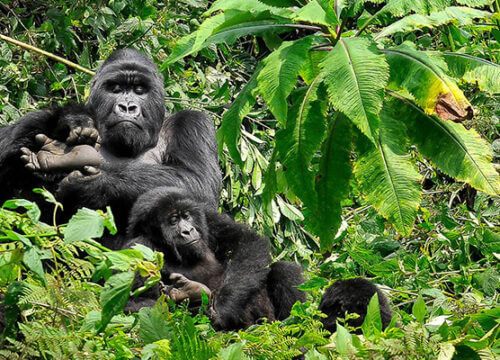Myths about gorillas in Uganda
Myths about gorillas in Uganda
Gorillas, especially the majestic mountain gorillas of Uganda, have long been surrounded by myths, misconceptions, and folklore. For centuries, these incredible primates have fascinated and intrigued people worldwide. While scientific research has helped demystify much about gorillas, many myths persist, particularly among local communities and even some international visitors. This article explores some of the most common myths about gorillas in Uganda and unveils the truth behind them.
Myths about gorillas in Uganda
Gorillas are aggressive and dangerous : One of the most widespread myths is that gorillas are aggressive and likely to attack humans. In reality, gorillas are gentle giants. They are naturally shy and peaceful animals that prefer to avoid confrontation. While silverbacks may display chest-beating or loud vocalizations, these behaviors are usually warnings to protect their group not signs of aggression. As long as visitors respect their space during gorilla trekking, there is no reason to fear them.
All Gorillas are the same : Many people assume that all gorillas are the same but this is not true. There are two main species of gorillas eastern and western, each with subspecies. Uganda is home to the mountain gorilla, a subspecies of the eastern gorillas. Mountain gorillas are unique in their thick fur which helps them survive in the cool climates of Bwindi Impenetrable Forest and Mgahinga Gorilla National Park in Uganda.
Gorillas eat meat: Contrary to popular belief, gorillas are not carnivores. They are primarily herbivores feeding on leaves, fruits, stems and bamboo shoots. Occasionally, they may consume small insects like ants or termites but meat is not part of their diet. Their plant-based diet plays a crucial role in maintaining the delicate balance of their forest ecosystems.
Gorillas are Just big monkeys: It is a common misconception to lump gorillas together with monkeys. Gorillas are actually great apes which means they are more closely related to humans than to monkeys. Unlike monkeys, gorillas lack tails and have larger brains relative to their body size. Their intelligence and social structures are remarkably similar to those of humans.
Mountain Gorillas can be kept as pets: Some people mistakenly believe that mountain gorillas could make good pets due to their gentle nature. This is far from the truth. Gorillas are wild animals that require specific environments and diets to live. Removing them from their natural habitat is not only unethical but also illegal under Ugandan and international laws designed to protect endangered species.
Gorillas are always found in trees: While gorillas can climb trees, they spend most of their time on the ground. Mountain gorillas in Uganda are primarily earthly due to their large size and weight. They build nests on the ground for sleeping and spend their days hunting in the forest undergrowth.
Gorilla trekking is unsafe: Some people worry that trekking to see gorillas in Uganda is unsafe due to the rough terrain or proximity to wild animals. However, gorilla trekking is a highly regulated activity led by experienced guides and trackers. Tourists are briefed on safety protocols and maintain a respectful distance from the animals during encounters, ensuring both humans and gorillas are safe.
Gorillas are solitary animals: Another common myth is that gorillas live alone. In fact, they are highly social creatures that live in groups called troops or families. A typical troop consists of one dominant silverback male, several females and their offspring. These family units work together for protection, grooming and raising young ones.
Gorillas are immune to human diseases: Some people believe that gorillas are unaffected by human illnesses due to their wild nature. However, gorillas share about 98% of their DNA with humans, making them vulnerable to many of the same diseases. This is why strict health protocols are enforced during gorilla trekking in Uganda to minimize the risk of disease transmission.
Conservation efforts are useless: It is easy to be negative about the survival of endangered species like mountain gorillas but conservation efforts in Uganda have been incredibly successful. Collaborative efforts by governments, local communities and conservation organizations have led to an increase in mountain gorilla populations over recent years. By visiting Uganda for gorilla trekking, tourists contribute directly to these conservation initiatives.
Explorer More Safaris
- 3 Day Bwindi Gorilla Trekking Safari
- 4 Day Uganda Gorilla Trekking and Wildlife Safari
- 4 Days Gorilla Trekking and Adventure Safari
- 5 Days Uganda Gorillas and Chimpanzee Tracking Safari
- 4-Day Rwanda Gorilla Trekking and Golden Monkey Tracking Safari
- 5 Day Gorilla Habituation and Chimp Trekking
- 6 Days Gorillas and Chimpanzee Trekking Safari
- 4-Day Uganda & Rwanda Gorilla Trekking Tour
- 3 Days Bwindi Gorilla Trekking Ugnada from Rwanda
- 10 days best of uganda primates & wildlife safari
- 10 Days Uganda Primates and Game Safari

